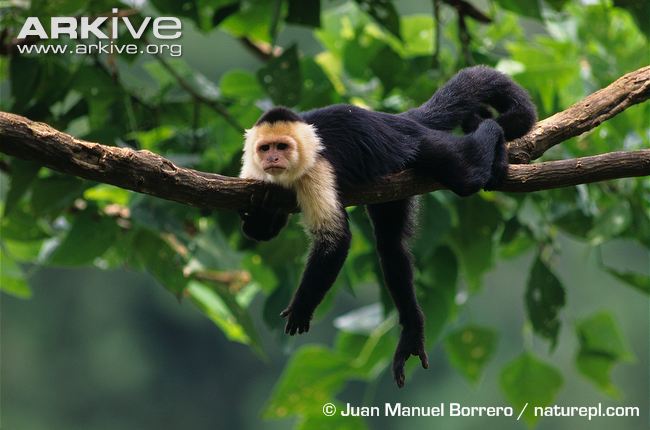Classification.
Kingdom: Animalia
Phylum: Chordata
Class: Mammalia
Order: Primates
Family: Cebidae
Genus: Cebus
Species: Cebus capucinus
The genus cebus comes from the Greek word kebos, which means long-tailed monkey. The species name was derived from the black "cap" on the monkey's head which resembled those who were worn by friars. Specifically, the name came from the group of friars called the Order of Friars Minor Capuchin in the sixteenth century
(The Free Dictionary, 2012). Photo courtesy Juan Manuel Borerro ©
Eukarya: Eukaryotes have cytoskeletons along with membrane-bound compartments such as the nucleus. On the other hand archae and bacteria do not have a nucleus or any other membrane-bound organs (Encyclopedia of Life, 2011).
Animalia: This kingdom of organisms get their energy by eating other organisms, or they are heterotrophic, unlike plants who create their own food, or are autotrophic. Fungi break down their food into chemical form so the nutrients can be absorbed without actually ingesting it. Animalia also lack a cell wall while fungi have a cell wall of chitin (Encyclopedia of Life, 2011).
Chordata: In this phylum, most animals are symmetrical bilaterally with their bodies divided into a head, trunk and tail. All, however, have a notochord, nerve cord, and visceral clefts and arches (Encyclopedia of Life, 2011).
Mammalia: All animals in this class have hair on their body at some point in time even if there are only a few. They all give birth to their young, with the exceptions of the platypus and echidas, and nourish their young with milk they produce within their mammary glands. Most of the animals are endothermic, meaning they produce their own body heat (Encyclopedia of Life, 2011).
Primates: Primates have highly developed brains which have a fissure, the calcarine sulcus, specific to this class which separates visual areas on both sides of the brain. They also have flat nails on the digits on their hands and feet even though some have some claws along with nails. The big toe of primates has moved down the foot to create a pincer that can grasp objects (Encyclopedia Britannica, 2012).
Cebidae: Within this family, the primates have round heads, eyes that face forward, and flat wide noses. Their bodies as well as their tails are covered in fur. They are active during the day and are arboreal, or live in trees and primarily eat plants and fruit however they do also eat other animals (Animal Diversity Web, 2012).
Cebus: All within this genus have prehensile tails, meaning their tails can grasp objects. Opposable thumbs are also a characteristic of these animals. Their bodies average between thirty and fifty-five centimeters long, which is also the average tail length for Cebus (Encyclopedia Britannica, 2012).
Cebus capucinus: This species is the only Cebus to live in Central America, where they prefer closed-canopy forests. They are identified by black hair all over except their chest, forearms and around their face where they have white hair. This species is also polygamous, which means they have multiple different mates (Encyclopedia of Life, 2011).
